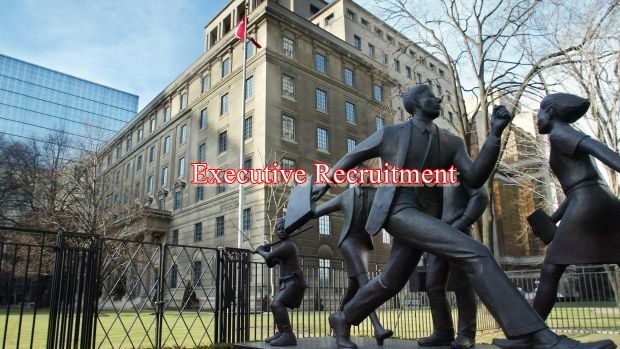Executive recruitment is a specialized field within human resources (HR) and talent acquisition that focuses on hiring top-level executives and senior management professionals. This process is critical for organizations, as these high-level positions play a significant role in shaping company strategy, culture, and overall success. For beginners in education, understanding executive recruitment involves grasping its purpose, processes, and best practices. This guide will delve into the key aspects of executive recruitment, providing a foundational understanding for those new to the field.
The Purpose of Executive Recruitment
Executive recruitment is not just about filling positions but about securing leaders who will drive the organization’s strategic goals. Executives are responsible for making high-stakes decisions, leading teams, and influencing the company’s direction. Their leadership can impact everything from organizational culture to financial performance.
Competitive Advantage
In a competitive business environment, having the right executives can provide a significant edge. Talented leaders can innovate, adapt to changes, and navigate challenges more effectively, giving the organization a competitive advantage over others.
Cultural Fit
Executives need to align with the company’s values and culture. A strong cultural fit ensures that leaders are not only capable of fulfilling their roles but also contribute positively to the organization’s environment and ethos.
The Executive Recruitment Process
The executive recruitment process is more complex and involved compared to standard hiring processes. Here are the key steps:
Identifying the Need
The first step is to clearly define the need for an executive position. This involves understanding why the role is essential, what gaps it will fill, and how it aligns with the organization’s strategic goals.
Developing a Job Description
A detailed job description is crucial. It should outline the responsibilities, required skills, qualifications, and experience needed for the role. It also includes expectations regarding leadership style and cultural fit.
Sourcing Candidates
Sourcing is the process of finding potential candidates. This can be done through various methods:
Internal Search: Sometimes, promoting from within the organization is a viable option. Internal candidates are already familiar with the company’s culture and operations.
External Search: This involves looking outside the organization, often through executive search firms, job boards, and networking.
Headhunting: For very specialized roles, headhunting can be used to approach potential candidates who may not be actively looking for a new position.
Screening and Selection
Once candidates are sourced, the screening process begins. This involves reviewing resumes, conducting initial interviews, and assessing candidates’ qualifications and experiences. Key considerations include:
Skills and Experience: Ensure that the candidate has the necessary skills and experience for the role.
Leadership Abilities: Evaluate their leadership style and how it fits with the organization’s needs.
Cultural Fit: Assess whether the candidate’s values and personality align with the company culture.
Interviewing
The interview process for executive positions is more rigorous. It typically includes multiple rounds of interviews with various stakeholders, including board members, senior executives, and sometimes external consultants.
Assessment and Testing
Psychometric Tests: These tests can provide insights into candidates’ cognitive abilities, personality traits, and leadership potential.
Executive Assessment Centers: These centers use simulations and role-playing exercises to evaluate candidates in scenarios similar to what they might face in the role.
Reference Checks
Conducting thorough reference checks is essential to verify the candidate’s past performance and reputation. References from previous employers, colleagues, and subordinates can provide valuable insights.
Negotiation and Offer
Once a preferred candidate is identified, the next step is to make an offer. This involves negotiating salary, benefits, and other terms of employment. Given the seniority of the position, this stage requires careful consideration and negotiation to ensure alignment between the candidate’s expectations and the organization’s capabilities.
Onboarding
Effective onboarding is crucial for integrating the new executive into the organization. This includes providing orientation, introducing them to key stakeholders, and setting clear expectations for their role.
Best Practices in Executive Recruitment
Establish clear objectives for the recruitment process. Understanding what you need in a candidate and how they will contribute to the organization’s goals helps streamline the process.
Use of Technology
Leverage technology to enhance the recruitment process. Applicant tracking systems (ATS), recruitment software, and data analytics can improve efficiency and help in making informed decisions.
Diverse Sourcing
Ensure a diverse approach to sourcing candidates. This includes considering candidates from various backgrounds, industries, and regions to find the best fit for the role.
Professionalism
Maintain a high level of professionalism throughout the recruitment process. This reflects well on the organization and helps in attracting top talent.
Continuous Improvement
Regularly review and refine the recruitment process based on feedback and outcomes. Continuous improvement ensures that the process remains effective and aligned with organizational needs.
Challenges in Executive Recruitment
Finding qualified candidates for senior roles can be challenging, especially in competitive industries or for niche skills.
Cultural Fit
Assessing cultural fit can be difficult, as it involves subjective judgments about how well a candidate will integrate with the existing team and organization.
High Expectations
Executives often have high expectations regarding compensation, benefits, and work conditions. Balancing these expectations with the organization’s capabilities can be challenging.
Confidentiality
Maintaining confidentiality during the recruitment process is crucial, particularly for sensitive roles or when replacing current executives.
Conclusion
Executive recruitment is a critical function that requires a strategic approach and an understanding of the unique needs associated with high-level positions. For beginners in education, grasping the intricacies of this process can provide valuable insights into how organizations secure leadership talent and ensure that their senior management is well-equipped to drive success. By understanding the purpose, process, best practices, and challenges of executive recruitment, one can appreciate the importance of this field and its impact on organizational success.




